Solved Examples from CENGAGE PHYSICS (ENGLISH) Chapter 3 CAPACITOR AND CAPACITANCE for Class 12
| Class 12 | PHYSICS |
| Chapter | CAPACITOR AND CAPACITANCE |
| CENGAGE PHYSICS (ENGLISH) | Solved Examples |
| Medium | English |
| Academic Year | 2023-2024 |
Question 1
Two identical parallel plate capacitors A and B are
connected to a battery of V volts with the switch S
closed . The switch is now opend and the free
space between the plantes of the capacitors is filled
with a dielectric of dielectric constant K. Find the
rario of the total electrostatic energy stored in both
capacitors before and after the introduction of the dielectric.
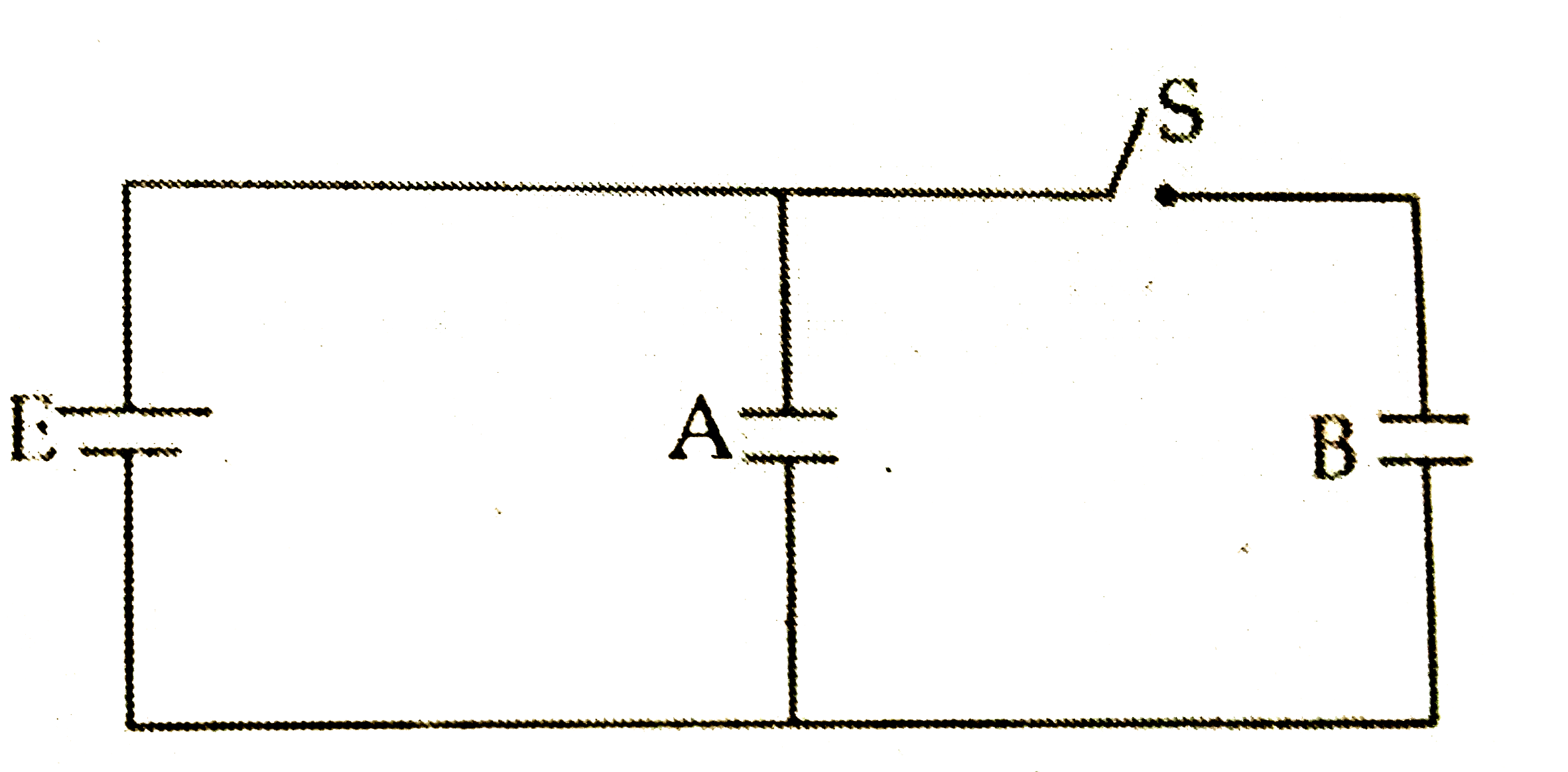 View Solution
View SolutionQuestion 2
Two parallel plate capacitors of capacitance C each are connected in series with a battery of emf ε. Then, one of the capacitors is filled with a dielectric of dielectric constane K.
i. Find the change in electric field in the two capacitors, if any
ii. What amount of charge flows through the battery?
iii Find the change in the energy stored in the circuit, if any. View SolutionQuestion 3
Five identical conducting plates, 1,2,3,4 and 5 are fixed parallel pltes equidistant from each other (see figure). A conductor connects plates 2 and 5 while another conductor joins 1 and 3. The junction of 1 and 3 and the plate 4 are connected to a source of constant emf V0. Find
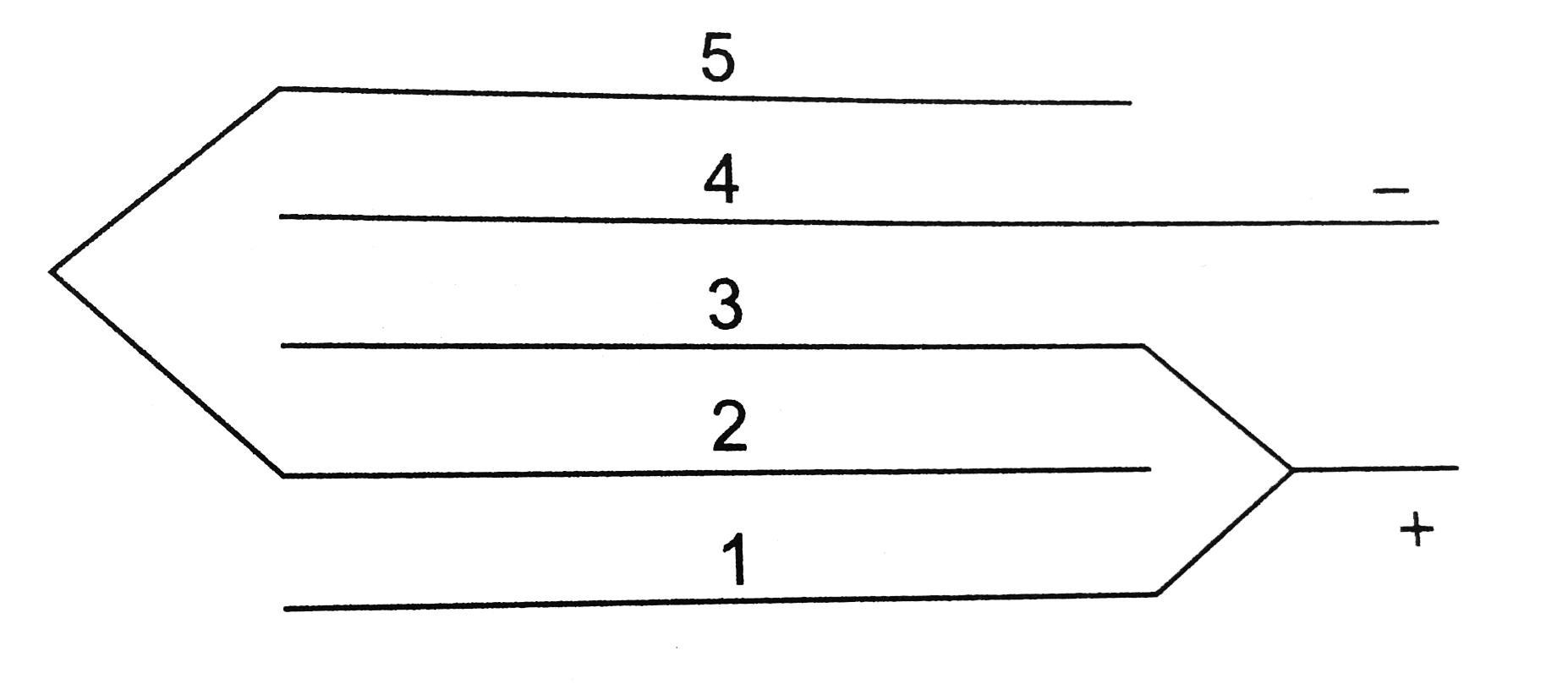
(a) the effective capacity of the system between the terminals of source.
(b) the charges on the plates 3 and 5. Given, d= distance between any two successive plates and A= area of either face of each plate. View SolutionQuestion 4
Two parallel plate capacitors A and B have the same separation d=8.85×10−4m between the plates. The plate area of A and B are 0.04m2 and 0.02m2 respectively. A slab of dielectric constant (relative permittivity) K=9 has dimensions such that it can exactly fill the space between the plates of capacitor B.
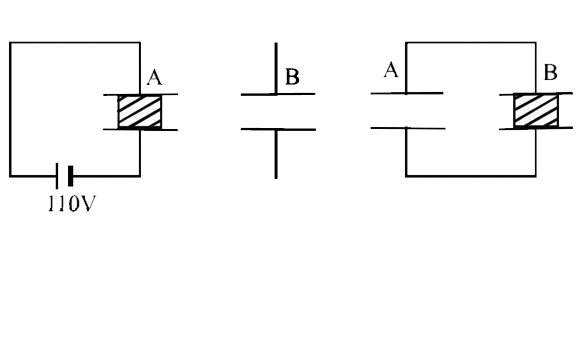
(i) The dielectric slab is placed inside. A as shown in figure (a). A is then charged to a potential difference of 110V. Calculate the capacitance of A and the energy stored in it.
The battery is disconnected and then the dielectric slab is moved from A. Find the work done by the external agency in removing the slab from A.
(iii) The same dielectric slab is now placed inside B, filling it completely, The two capacitors A and B are then connected as shown in figure(c). Calculate the energy stored in the system.View SolutionQuestion 5
Two capacitors A and B with capacities 3μF and 2μF are charged to a potential differece of 100V and 180V, respectively. The plates ot the capacitors are connected as shown in, with one wire free from each capacitor. The upper plate of A is positive and that of B is negative An uncharged 2μF capacitor C with lead wires falls on the free ends to complete the circuit.
i. Calculate the final charge on the three capacitors,
ii. Find the amount of electrostatic energy stored in the system before and after the completion of the circuit.
 . View Solution
. View SolutionQuestion 8
Two parallel plate capacitors differ only in the spacing between their (very thin) plates , AB has a spacing of 5 mm and a capacitance of 20pF, while CD has a spacing of 2mm . Plates A and C carry charges of +1nC, while B and D each carry −1nC, What are the potential diffences VAB and VCD after the capacitor CD is slid centrally between and parallel ot the plates of AB without touching them ? Would it make any difference if CD was not centrally paced between A and B ?
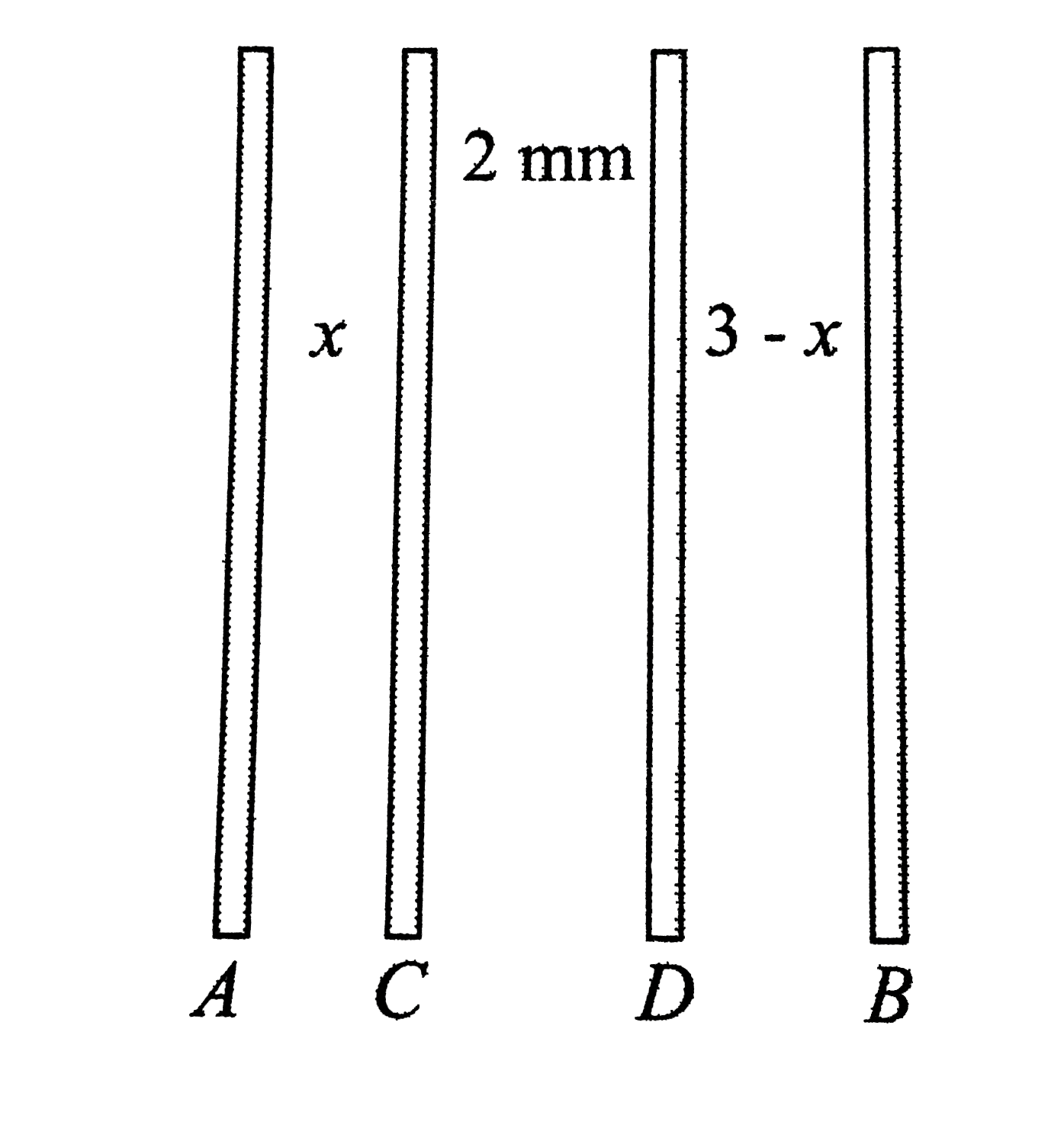 .View Solution
.View Solution

 .
. 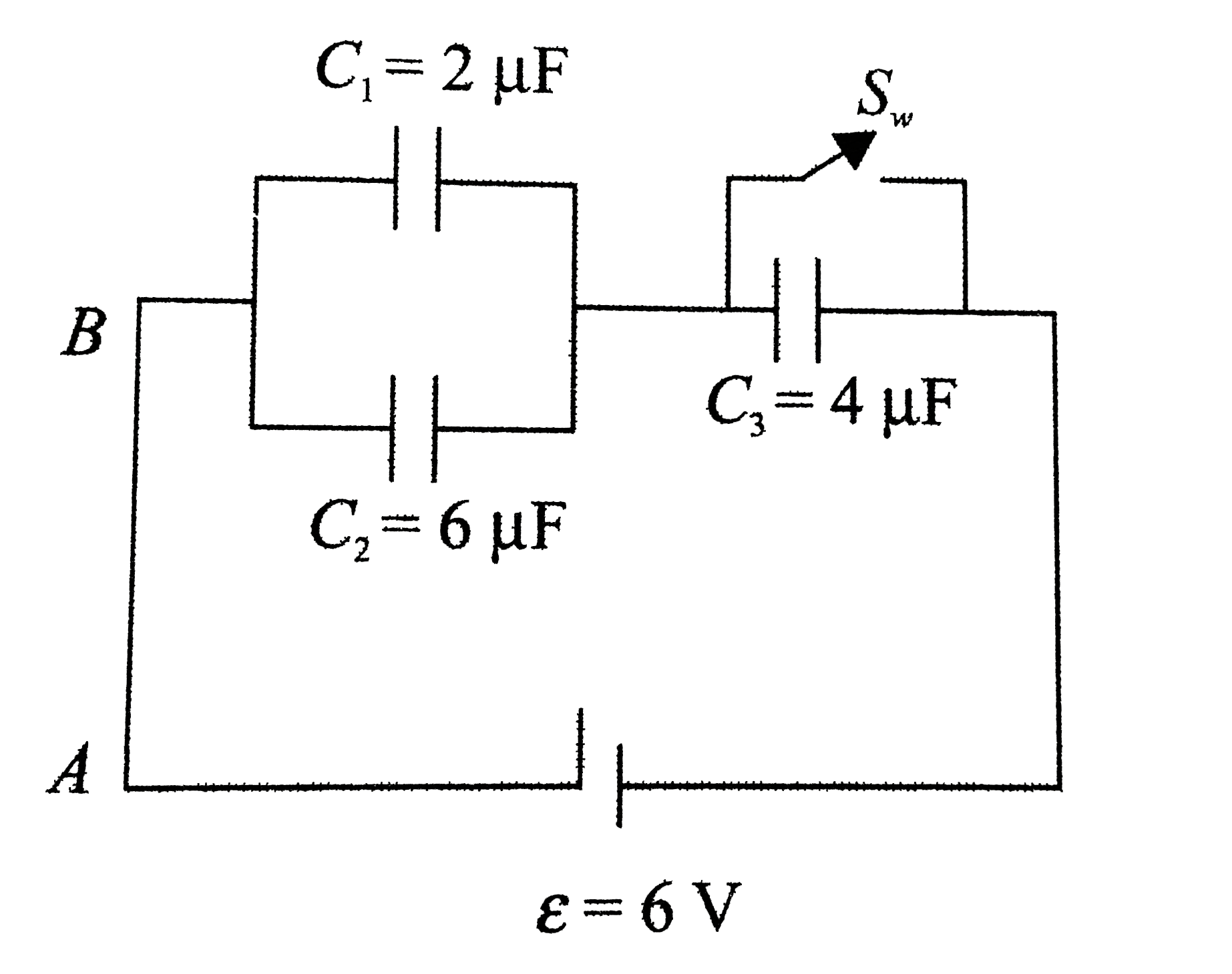 .
.